Herb Abrams was a big-time wrestling fan, and a wealthy one, at that. Abrams was one of the first to prove what a dangerous combination that was, launching the Universal Wrestling Federation in 1990, signing up all the big names he could and putting them on TV before their paychecks bounced.
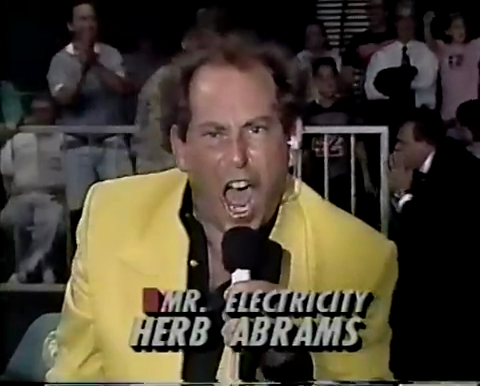
But if Abrams wanted the UWF to be the #1 wrestling promotion in the United States (and he did), he would need to go on pay-per-view (and he did).
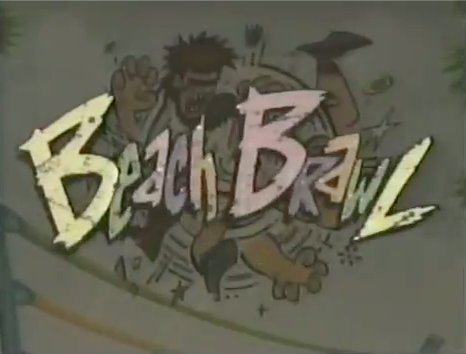
In what he hoped would be a massive hit in front of a sell-out crowd, Abrams put on Beach Brawl.
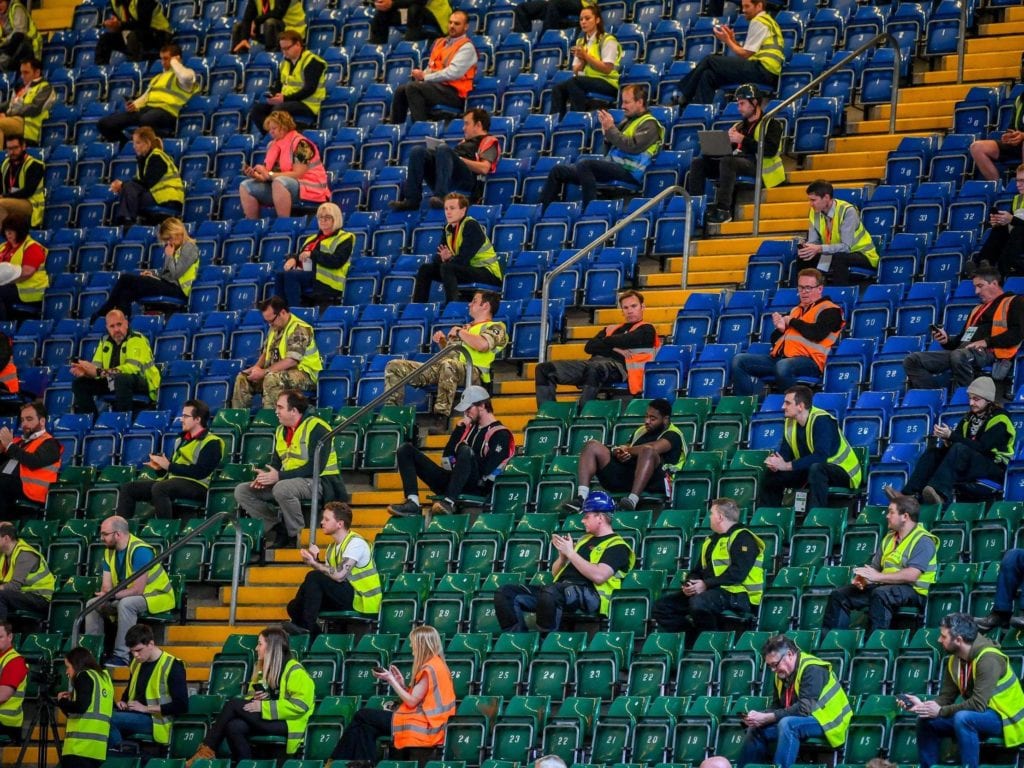
Although it took place in 1991, Beach Brawl was ahead of its time and would hardly seem out of place in 2020. After all, with 550 fans in a 4000-capacity arena, there would have been enough space to safely socially distance.
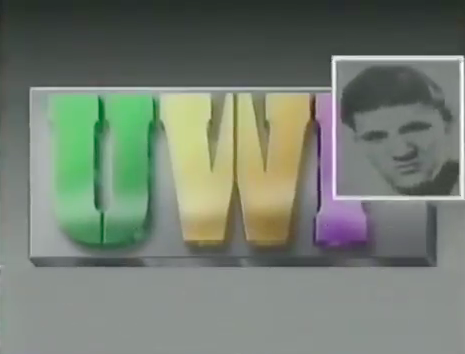
Beach Brawl opened with a photo montage of the many wrestling legends who were now part of the UWF. Bruno Sammartino…
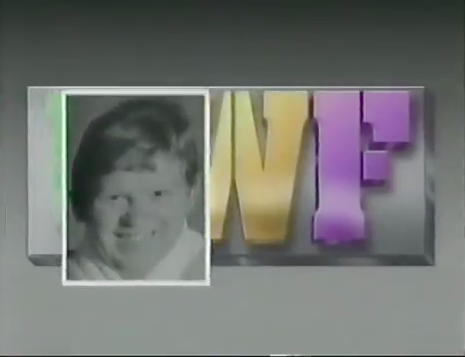
…Bob Backlund…
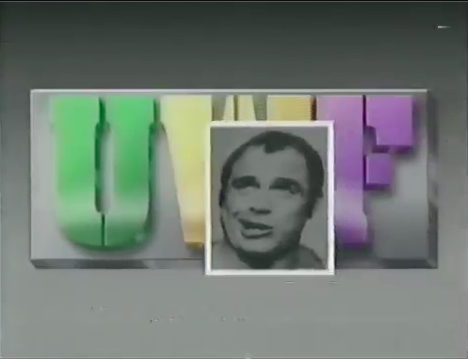
…and, uh, was that the best picture of George Tolos they could find?
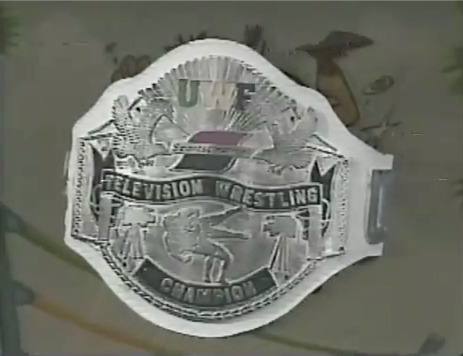
An announcer ran down the night’s card, highlighting the Bam Bam Bigelow vs. “Dr. Death” Steve Williams bout for the brand-new UWF Sportschannel TV championship, which was the biggest and most important title in the promotion somehow.
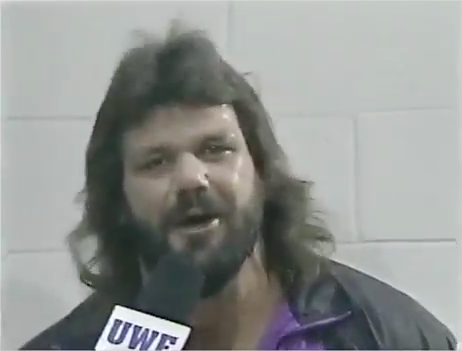
In a pre-match interview, Williams promised he’d leave “with the gold around his belt”…
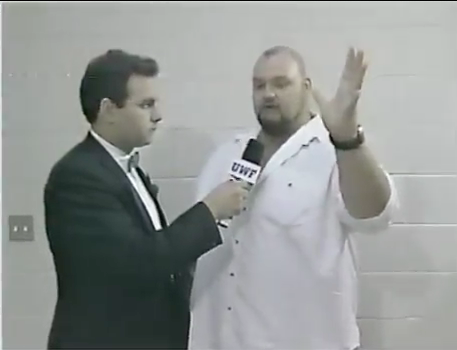
…but Bam Bam said he’d use his mobility, joe-bility, and ho-bility to win the title… and more! “Along with the championship,” explained Bigelow, “you get the money. And when you get mo’ money, you get happy.” Biggie Smalls would like a word, Bam Bam.
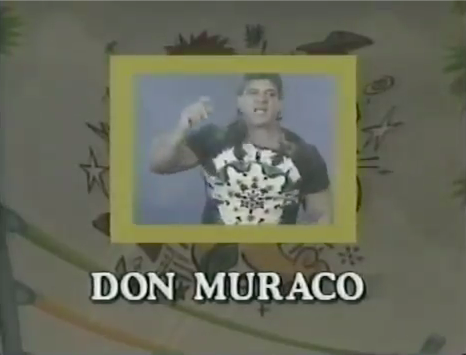
Another big match was “a mammoth, butt-kickin’ street fight” between Don Muraco (who wasn’t even there) and Terry “Bam Bam” Gordy.
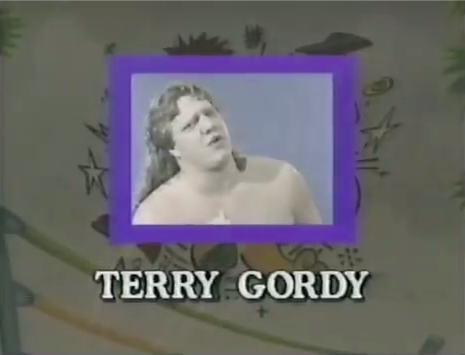
Yes, there were two wrestlers named Bam Bam on this card – that’s one Bam Bam for every 225 fans. That’s like if Wrestlemania III featured 414 Bam Bams (or 346 Bam Bams, if you believe Dave Meltzer).
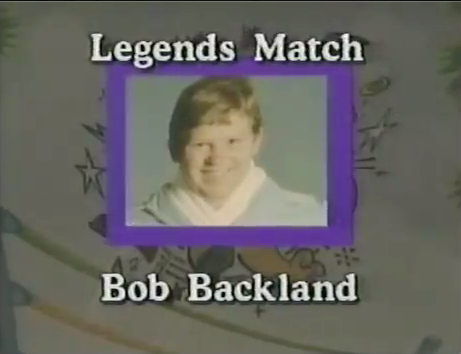
There would also be a special legends’ match between Ivan Koloff and Bob Backlund. They used the same Backlund photo from the legends montage, but in color.
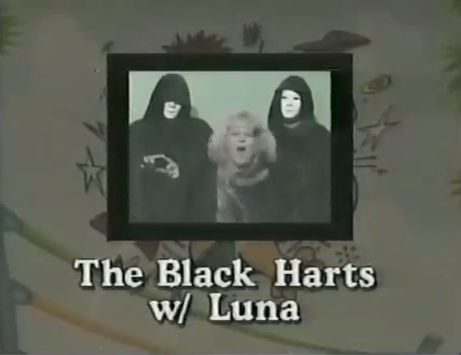
Luna Vachon’s “Black Harts” would be in action, as well. Now, I know Owen Hart would later call himself “Black Hart”, and Smith Hart did name his daughter Satanic Ecstasy, but none of Stu’s kids were under the spooky hoods. It was a typo.
The Blackhearts hailed from… Parts Unknown? The Depths of Hell? The Realm of Darkness?
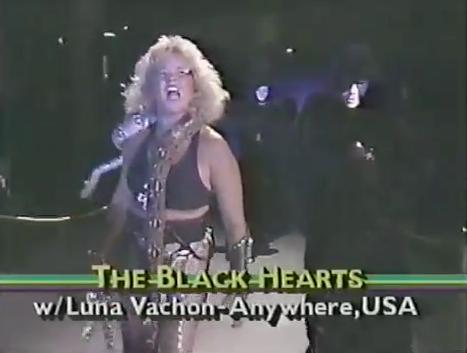
Nope! Try “Anywhere, USA”.
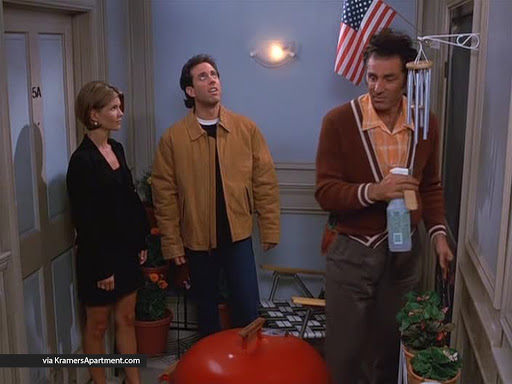
Most traditionalists would find Luna Vachon’s demon-spawn look off-putting, but not Bruno Sammartino. “Luna is a very attractive girl,” he said, without irony.
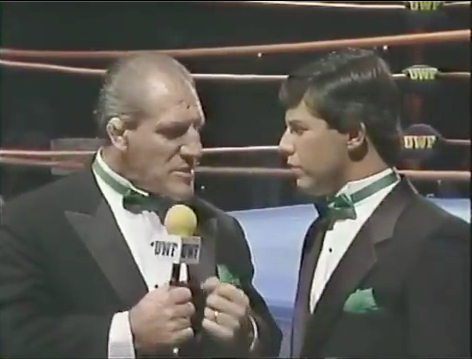
Bruno knew what was up. I bet he had a Suicide Girls membership later in life.
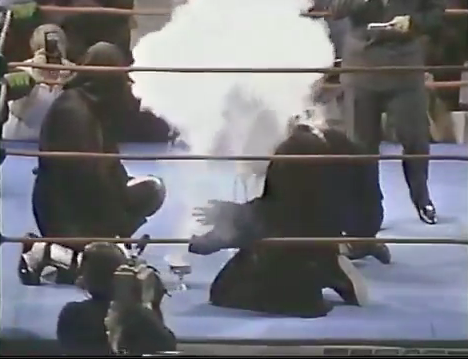
One of the Blackhearts was David Heath, better known as Gangrel. I don’t know who the other Blackheart was, but I’m guessing RVD.
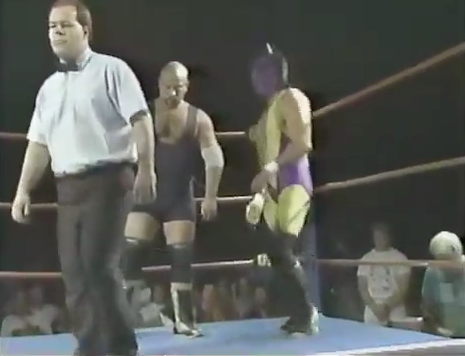
Their opponents were The Fire Cat (formerly WWF’s Battle Kat) and Jim Cooper.
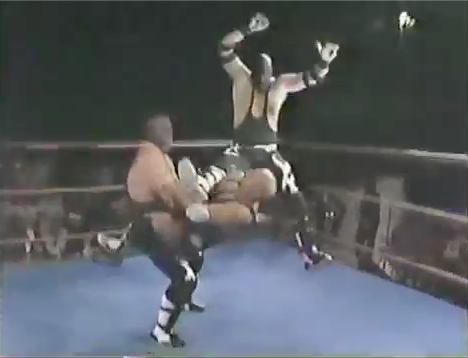
Cooper and the Fire Cat may have been a great Cat Stevens album, but they were a lousy team, losing to the Blackhearts after the “Veg-o-Matic”.
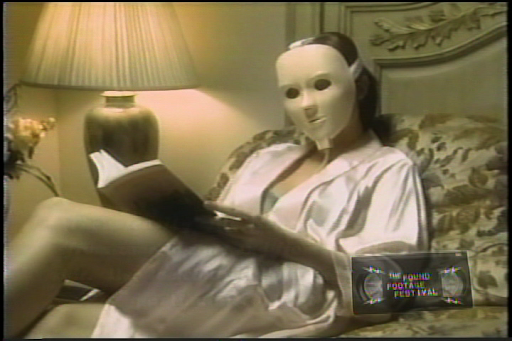
I doubt a team as sinister as the Black Hearts would call their finisher the same thing as an As-Seen-On-TV appliance, but their masks were later sold as the facial toning device Rejuvenique, so who knows?
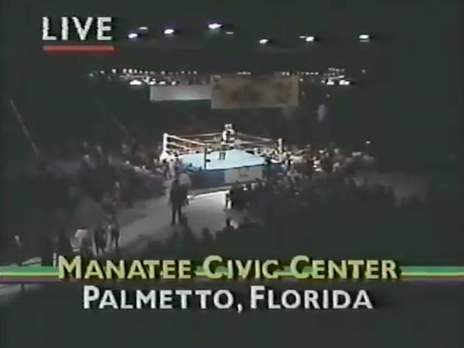
For whatever reason, they showed the entire audience in a wide shot (though not that wide of a shot, as there were only 550 fans) while Craig DeGeorge explained where Palmetto, Florida was.
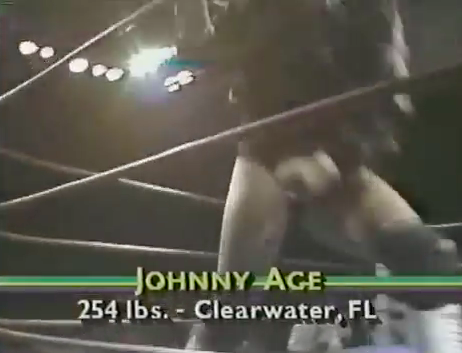
Johnny Ace, who replaced Don Muraco, entered the ring to what DeGeorge called a “so-so” reaction. On the other hand, Craig expected Terry “Bam Bam” Gordy’s entrance to garner a huge pop from the meager crowd. It did not.
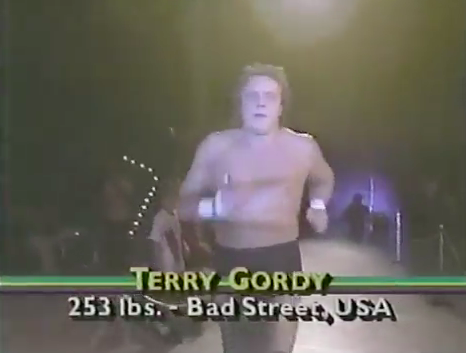
Along the way, the graphics department managed to mess up both Ace’s hometown and Gordy’s weight.
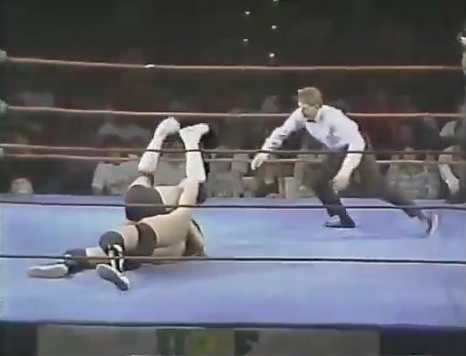
The street fight began in earnest with a headlock takeover, rope breaks, and frequent pin attempts.
Soon, Johnny Ace had Terry Gordy on the defensive. “He’s from Bad Street, USA,” said DeGeorge of Gordy, “but I think he’s on Queer Street right now.” There are at least 4 punchlines I can think of, so take your pick:
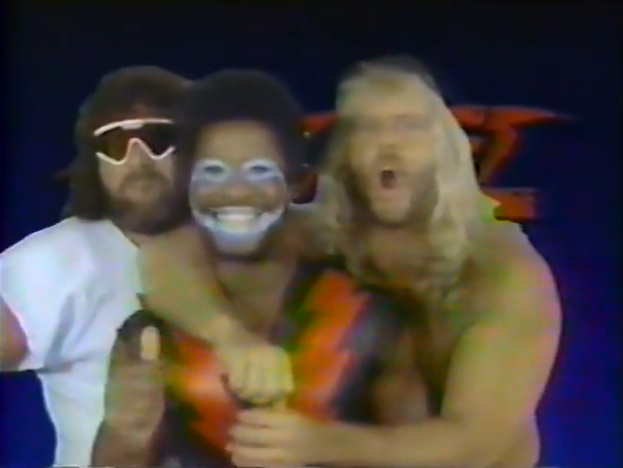
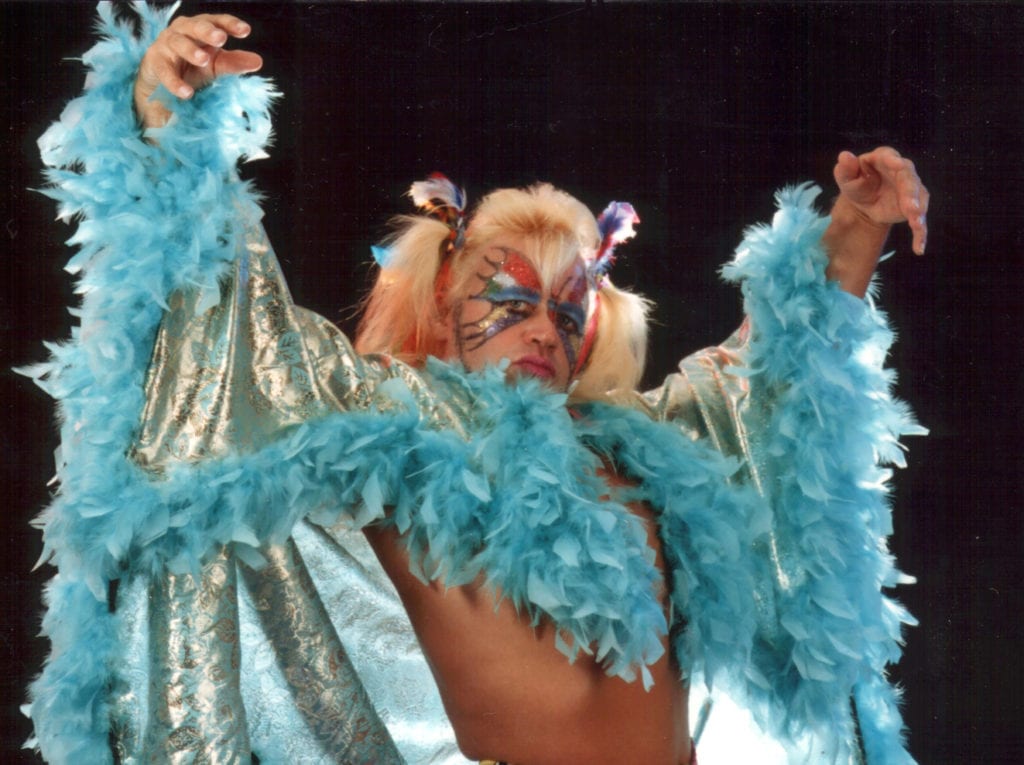
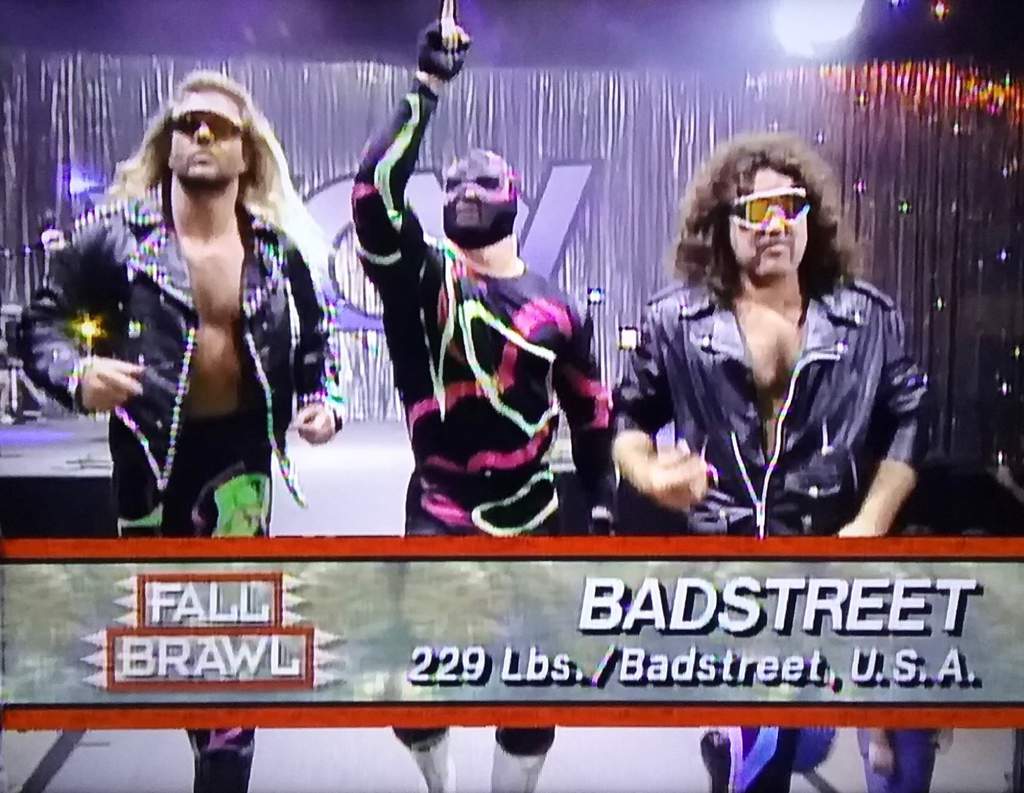
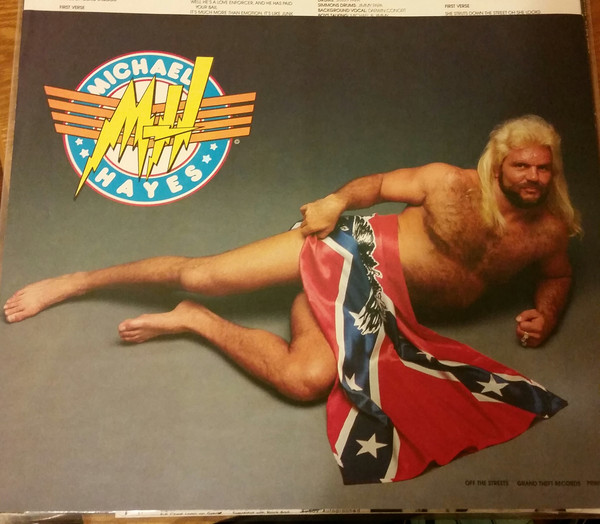
The two brawled into what was technically a crowd, leading the referee to ring the bell.
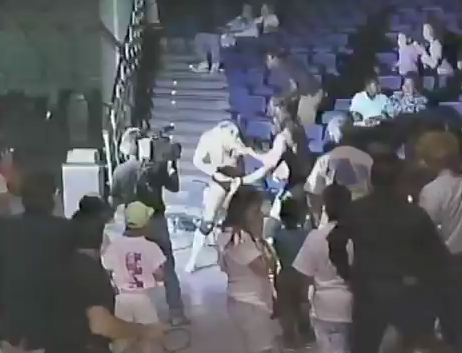
“Uh oh, the bell rang,” said Bruno. “Now, wait a minute, there’s no disqualification, is there?” The announcers struggled to piece together how a no-DQ, no-rules street fight could end in a countout, before ultimately pretending it made sense. At least this street fight started in the ring and not in an actual street, lest both men have been counted out ten seconds into the match.
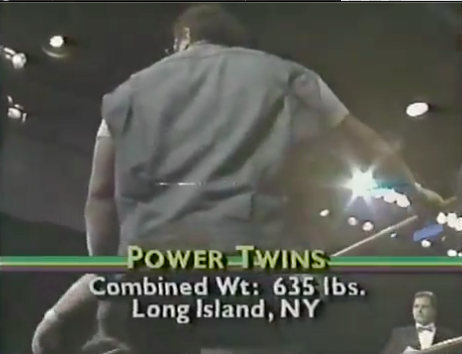
After Ace and Gordy punched each other and wandered around the arena for longer than the actual match, there was a tag team match featuring the Power Twins, who hailed from Power City, New York (also known as Long Island)…
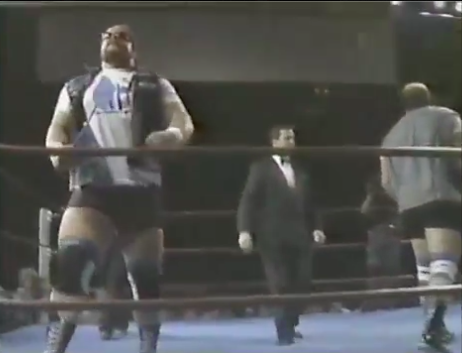
…and brandished flyswatters to combat the former Killer Bees, here known as Masked Confusion…
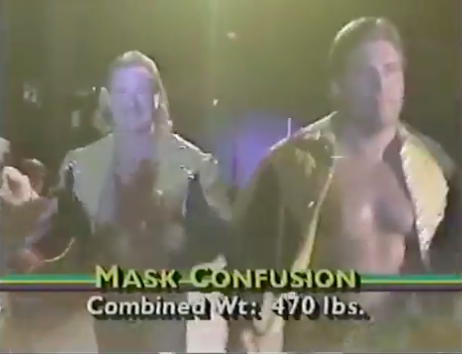
…or, as the match graphics called them, Mask Confusion…
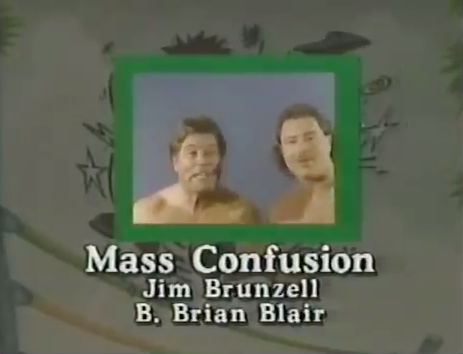
…or, as the opening graphics called them, Mass Confusion. Ironically, these name mix-ups didn’t create mass confusion, as only about 10,000 people in the country ordered this event, which is hardly a mass.
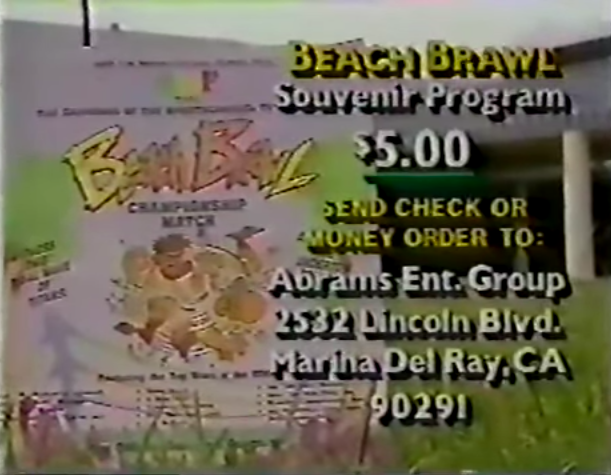
But fear not, because even though Herb Abrams lost money at the gate and in the pay-per-view receipts, he could still make up the difference through mail orders for the Beach Brawl program and VHS tape…
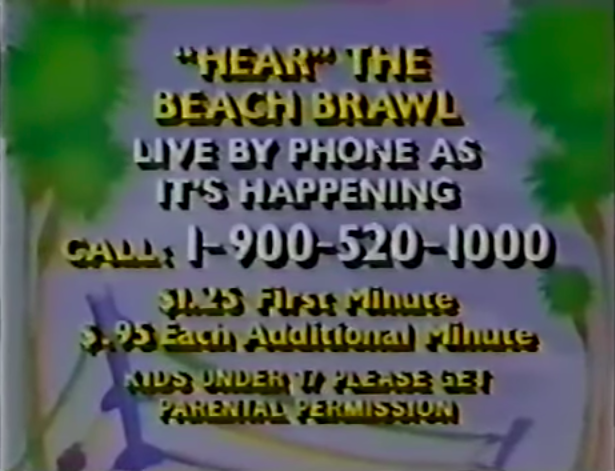
…or through the 900 number, where fans could listen to the event for a dollar a minute. And to think I listened to scrambled 90s pay-per-views for free like a sucker!
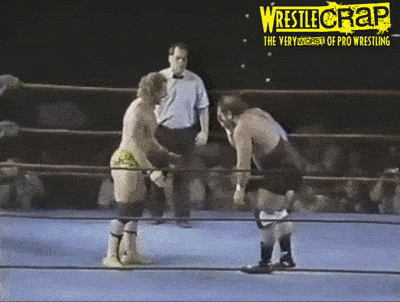
Brian Blair borrowed moves out of the Midget Wrestler’s Playbook (which Herb Abrams was not selling through mail order), to limited success…
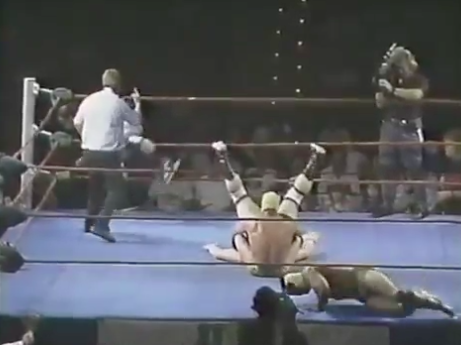
…but still prevailed when Masked Confusion used their self-titled tactic.
Next was the first-ever UWF Ladies’ Championship match, between Candi Divine and Rockin’ Robin. Divine, said Sammartino, was one of the best. “And not a bad wrestler, either!” chimed in DeGeorge, wink wink.
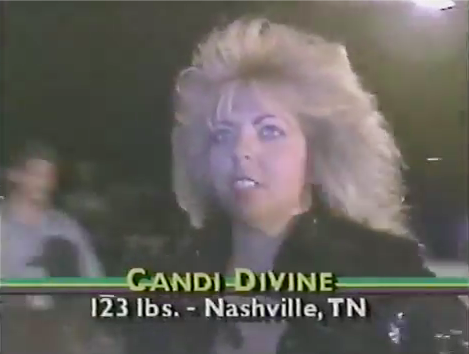
Herb Abrams must have thought the announcers failed to properly sexualize the wrestlers, so he had their intros dubbed over to make sure home video viewers knew that Candi Divine was “very lovely, sexy, vivacious, and talented”.
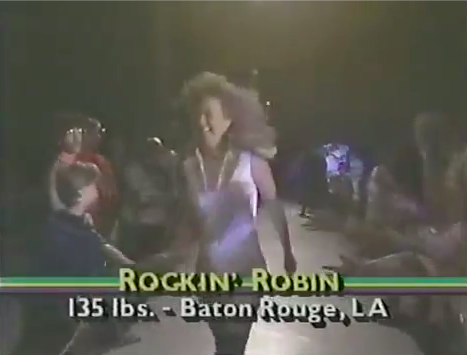
Also, Rockin’ Robin was just “very vivacious”. Ouch.
Herb must have really liked how the ring announcer said, “Baton Roooouge”, because he left that it.
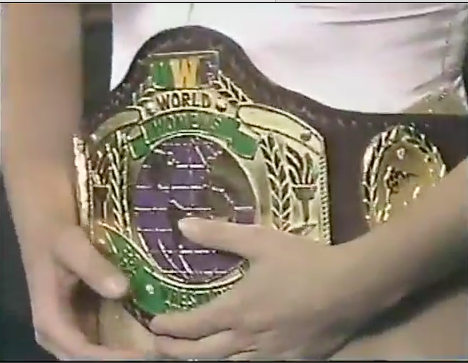
Robin won the match to become the first ever UWF Ladies’ Champion. A few months later, she would start a true UWF tradition by leaving the promotion with the belt.
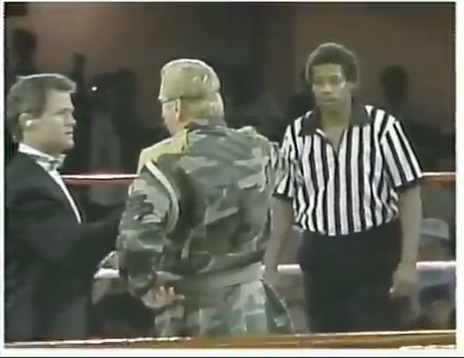
We saw footage from the past year of the racist Col. DeBeers refusing a black referee…
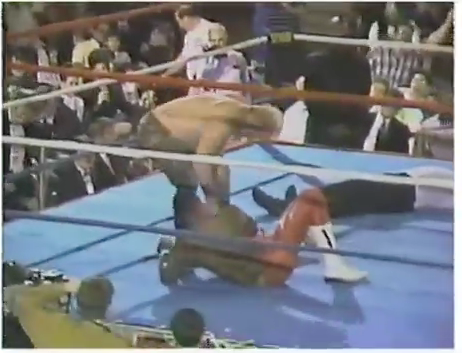
…and whipping black wrestler Soul Train Phillips with a belt…
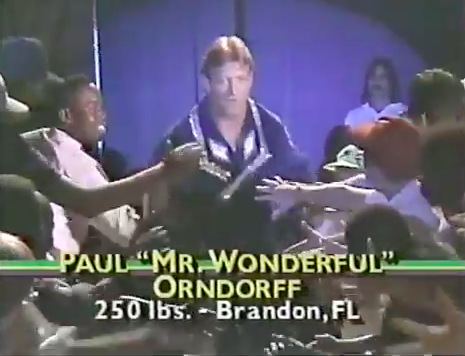
…leading, naturally, to a match with legendary black wrestler Paul Orndorff. Don’t worry, he used “U Can’t Touch This” as his theme music.
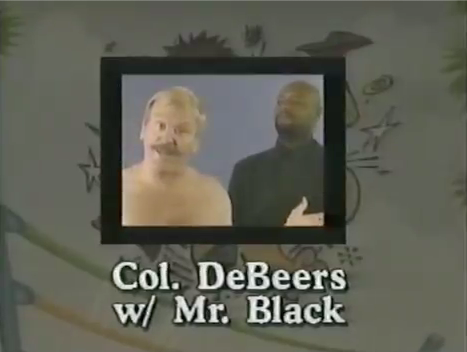
Not at ringside as advertised was DeBeers’s servant named – what else? – Mr. Black.
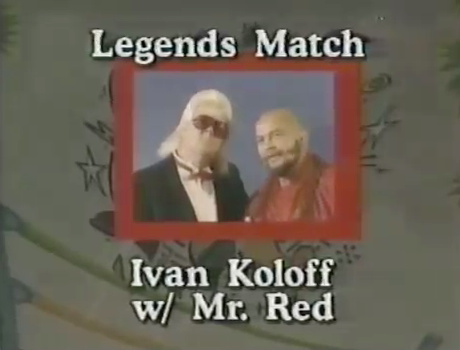
Perhaps he was pulling a jewel heist with Ivan Koloff’s manager.
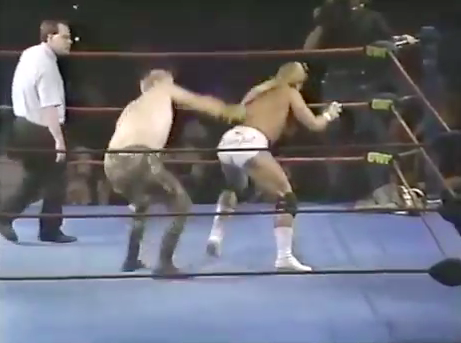
Orndorff and DeBeers each whipped each other with the leather strap. It was, after all, a strap match. “I think this is all legal, right?” asked Bruno, which would sound like a dumb question if you hadn’t seen how the street fight ended up.
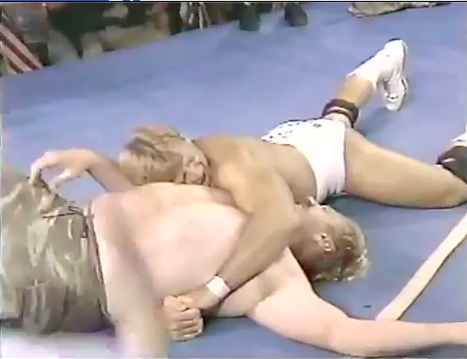
Orndorff won after four minutes and one wrestling move, the piledriver.
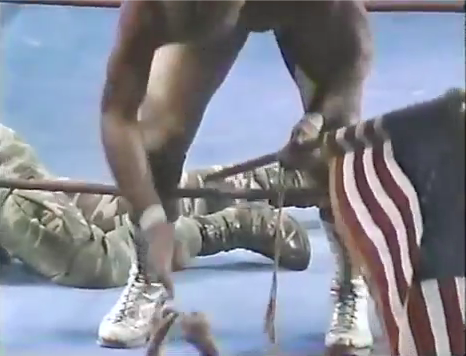
The VHS version dubbed over MC Hammer, but a new voiceover narrated how Mr. Wonderful accepted an American flag from, and I quote, “one of the very popular children sitting up front at ringside”. Popular among whom? Do I really want to ask?
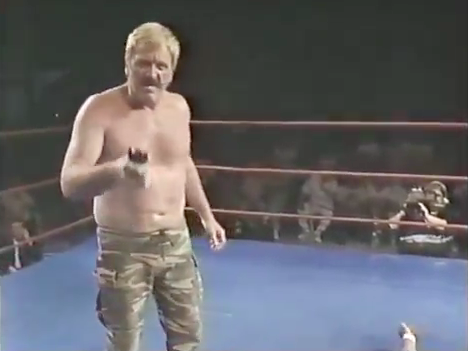
DeBeers then snuck up behind Orndorff and incapacitated him with a stun gun (“one of those devices ladies use for defense”, explained Craig DeGeorge) and stole the flag.
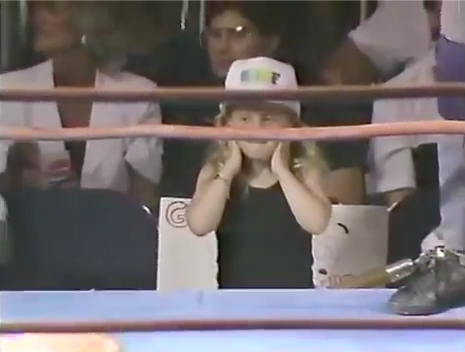
I bet a big husky kid could have stepped in and defended Orndorff, had Mr. Shallow not shown such blatant favoritism towards the popular kids.
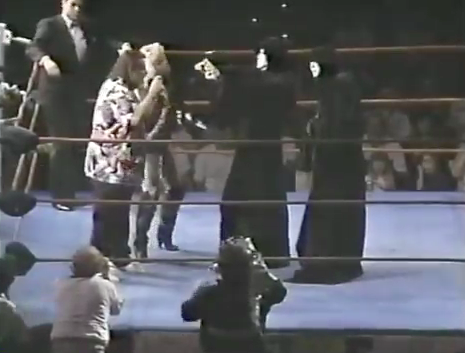
The action took a break for an edition of Captain’s Corner with world-famous manager and bullsh*tter, Lou Albano. His guests were the Blackhearts and their “half-wit” manager Luna Vachon. Did she have the brain of a dehydrated BB?
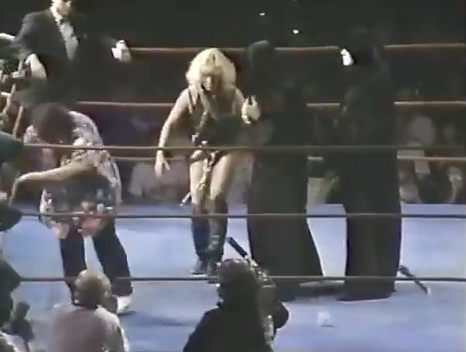
“I don’t like the example that they set for our children!” Lou ranted. “They’re talking about evil, they’re talking about bad, they’re not talking about good!” And remember, if you do drugs, you go to hell before you die.
Lou stormed out of the ring, and the whole thing was over in less than a minute. Pointless, yes, but also inconsequential.
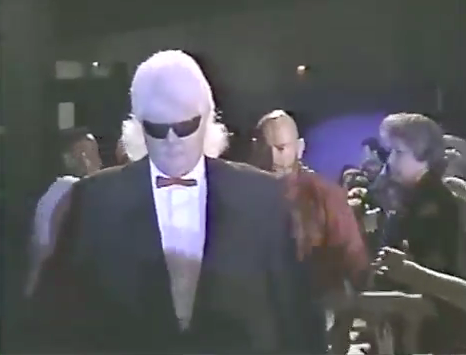
It was time for the “eagerly anticipated legends’ match” between Ivan Koloff, who came to the ring with his fluffy manager Mr. Red and with the Tetris theme blaring…
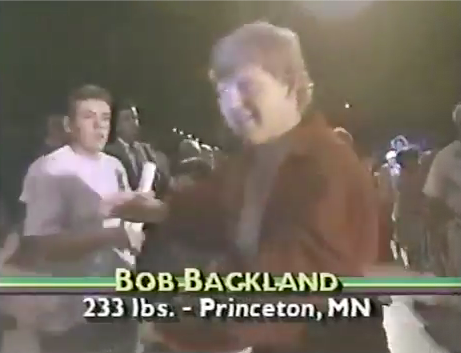
…and Bob “Backland”, who entered to “Stars & Stripes Forever”. For some reason, the hundred-year-old Sousa march was dubbed over on the VHS version (and less-than-subtly, I might add).
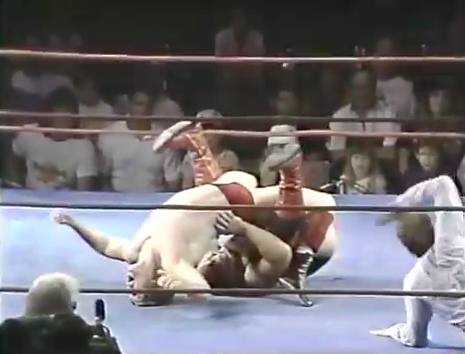
Backlund won with a neck bridge in a match reminiscent of the squash matches he’d have on WWF Superstars in 1993, except shorter; the two former WWWF champions went all of 2:23.
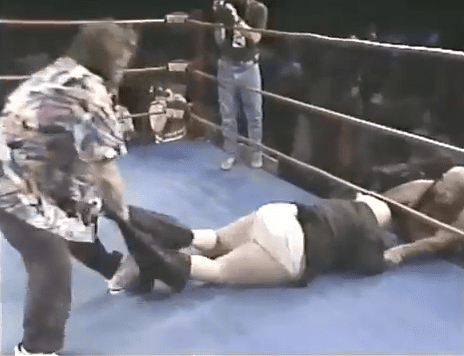
Captain Lou made a second appearance, this time to punch out and pants Mr. Red.
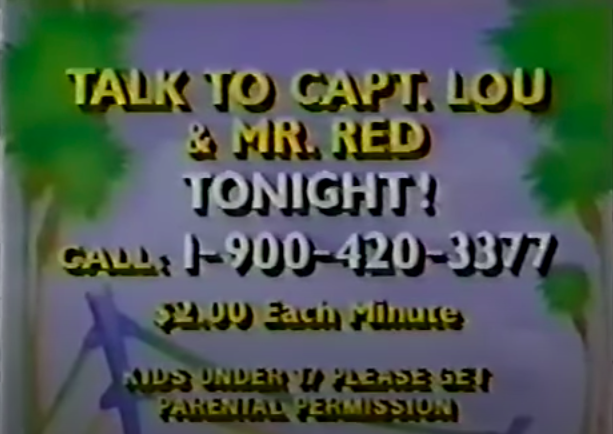
Boy, I’d pay two bucks a minute to hear the fallout from that!
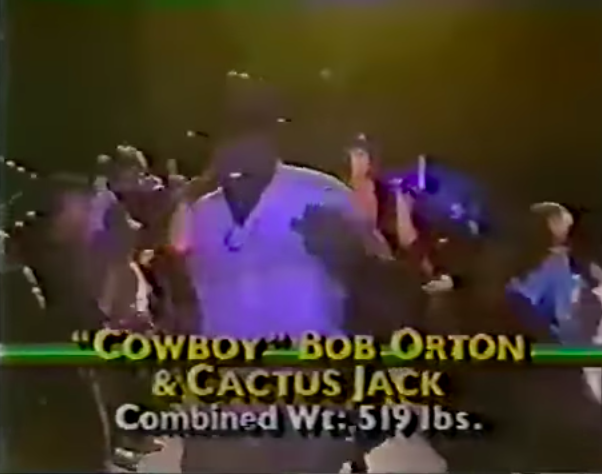
For the semi-main event, Cactus and Orton stormed to the ring to “Sin City” by AC/DC, although this was dubbed over with the theme to Bonanza on the home video edition.
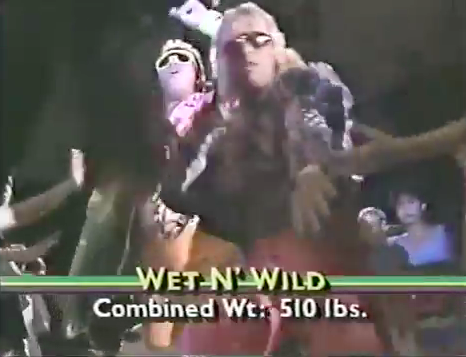
Their opponents were Wet N’ Wild, the only tag team ever to be named for an enema.
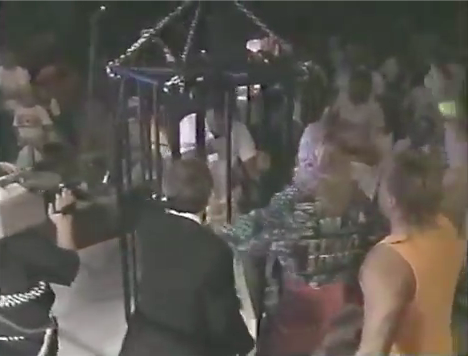
Jack and Bob had wrestling legend John Tolos at ringside to do their dirty work, but Wet ’N’ Wild didn’t have anyone in their corner (like, for instance, Carlos Colon). So, to even the odds, Tolos was put in a shark cage and suspended above the ring.
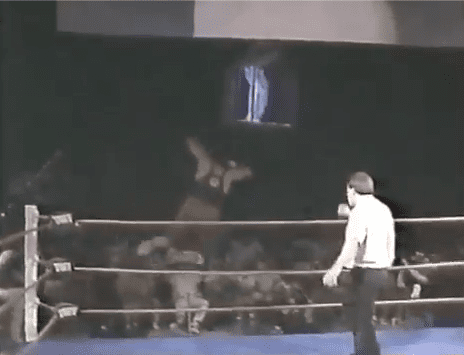
Cactus Jack made his mark on the event by delivering one of his patented elbow drops to the concrete floor, which was witnessed by some of the 550 in attendance, but not by the pay-per-view or home video audience, as the camera did not catch his landing. He retired at 34, folks.
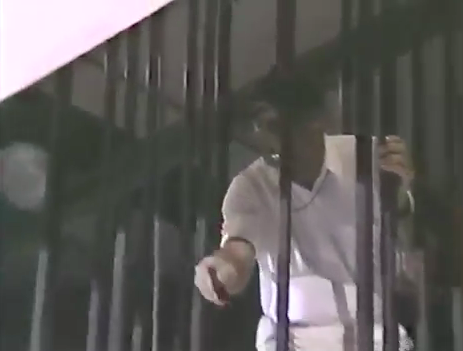
Tolos tossed Orton some brass knuckles so that he could try to hit his opponent but hit his partner instead.
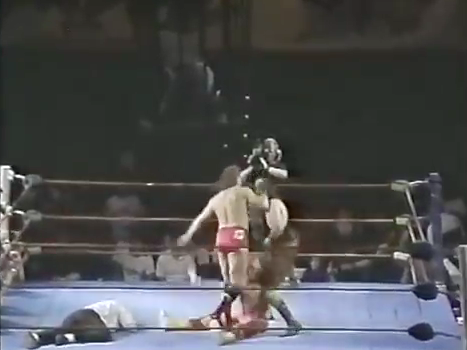
And would you believe what happened next!?
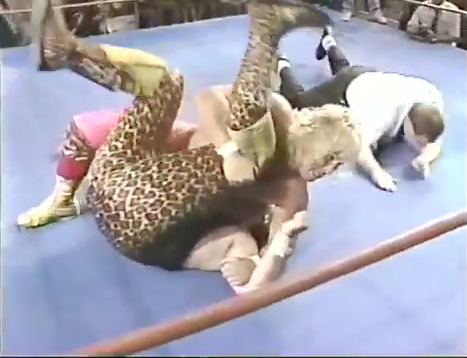
“Wild Thing” Steve Ray pinned Jack in 4:02. Cactus was furious at Orton for the foul-up. You know what that meant?
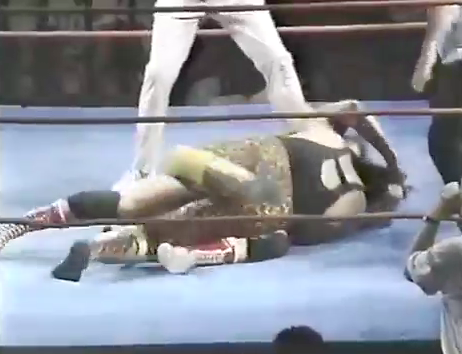
Catfight!
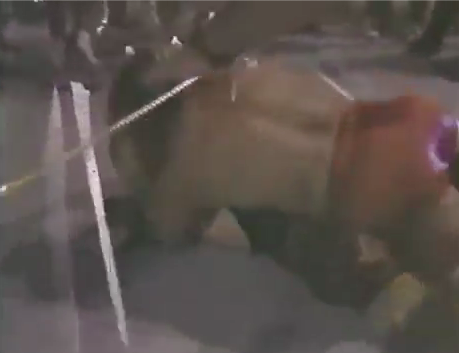
CAAATFIIIIIGHT!
The main event was a big ol’ hoss fight between “Dr. Death” Steve Williams and Bam Bam Bigelow for the prestigious UWF Sportschannel TV Title and the $100,000 belt that went with it.
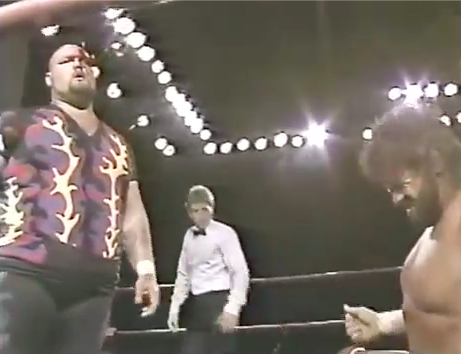
Within minutes of the opening bell, both men were busted open.
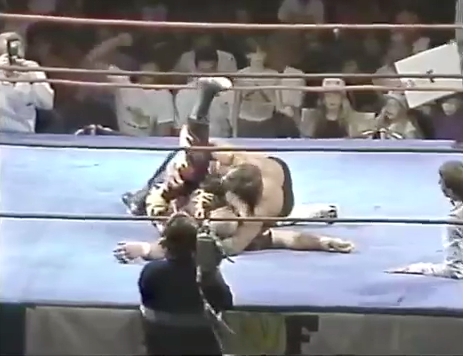
And within minutes of that, the match was over, with Steve Williams winning on a powerslam. Clocking in at 7 minutes, it wasn’t the shortest match on the card by a long shot, but it was the only match that viewers might have wanted to see go any longer.
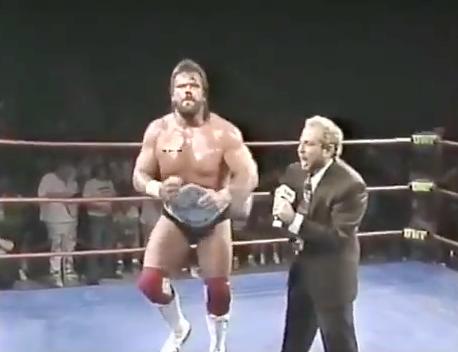
UWF President Herb Abrams presented Williams with a belt he designed specifically so that it would say, “FU” when seen from the front.
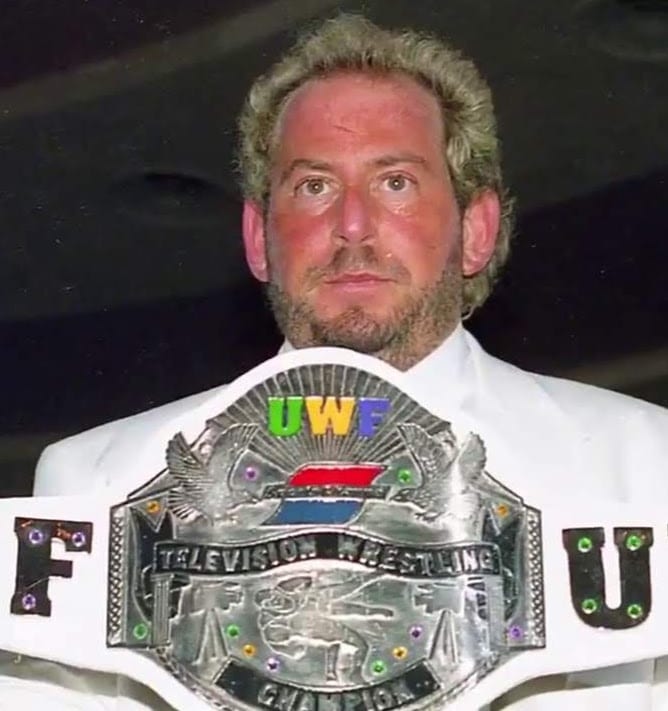
It was his message to Vince McMahon that he’d be the #1 wrestling promotion in the country.
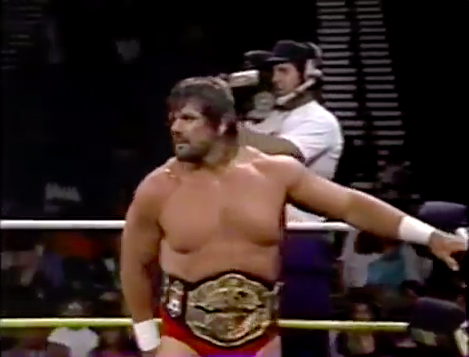
Williams would reign as champion until he left the UWF the following year, but he’d be back at 1994’s Blackjack Brawl, when Abrams would make up a brand new title and advertise Williams as the champion.
So did Herb Abrams go three entire years before running a second pay-per-view? Well, not exactly. Beach Brawl was such a colossal flop that Herb never tried pay-per-view again. He’d air Blackjack Brawl on cable TV, but still manage to lose barrels of money by renting a much larger, more expensive venue and drawing an even smaller crowd.
Abram would die of a heart attack in 1996 after a cocaine-fueled rampage that saw him chase around a prostitute with a baseball bat. Sounds like Herb really could have used Bigelow’s ho-bility.


